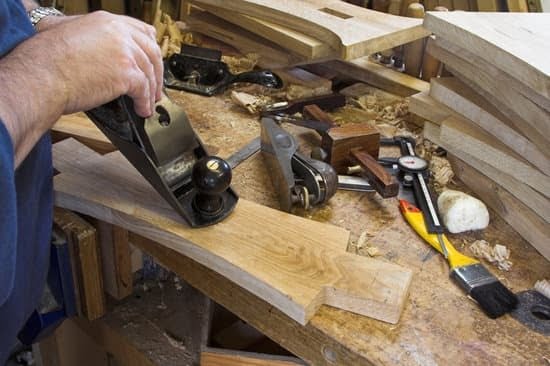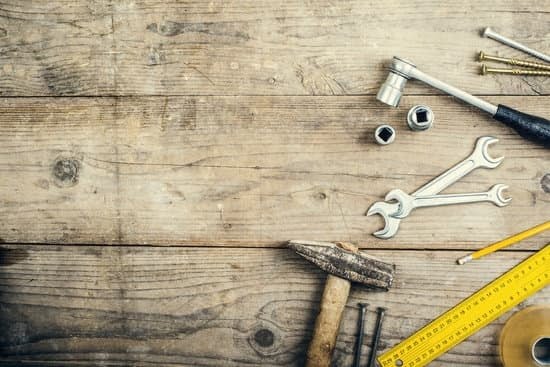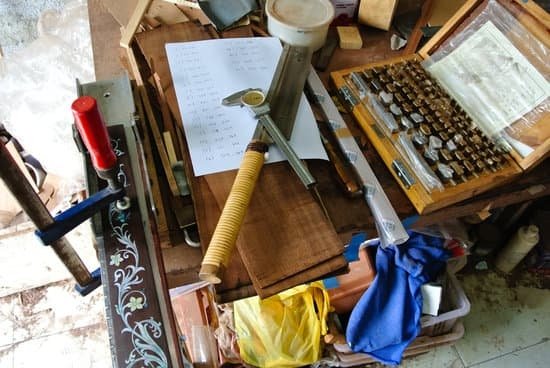Introduction
Woodworking machinery service and repair are essential for many woodworking businesses. All kinds of woodworking machines need periodic maintenance to operate reliably, efficiently, and safely in order to achieve optimum performance. Without proper upkeep, the machine can cause problems on the job that cost the business in terms of both time and money.
Thus, it pays to invest time and money into maintaining your woodworking machinery so you can avoid costly issues down the line. Woodworking machinery service and repair can help you keep your equipment running smoothly and ensure that it continues performing optimally for years to come. Additionally, regular servicing may even extend the life of your woodworking machine. Regular oil changes ensure that all parts stay lubricated so they work as intended without creating excessive wear-and-tear over time. Checking for wear on parts like blades or bearings not only makes sure everything functions as it should but also helps prevent potentially damaging situations from arising.
Performing minor repairs such as tightening bolts or replacing worn parts enable your equipment to run at its best at all times, minimising costly repairs in the future. Also, cleaning is an often overlooked aspect of keeping your machinery up to scratch; dirt build-up over time can lead to malfunctioning which may require more extensive repairs or complete replacement of certain components. Therefore regular cleaning with appropriate cleaners and degreasers is recommended in order to keep any elements of your woodworking machine working properly without extra repair costs or disruptions in workflow.
Different Kinds of Machinery Services and Repairs
Woodworking machinery service and repair covers a wide range of machines, tools, and equipment used in the manufacturing and construction industries. Common services and repairs include maintenance, troubleshooting, installation, and more.
Maintenance – A woodworking machinery service technician may perform regular maintenance to prevent wear and tear on the equipment. This includes preventing dust accumulation, checking for loose hardware, oiling the moving parts, inspecting electrical connections, cleaning up debris from sawdust-producing machines, lubricating spindles and rollers, adjust tension on belts or chains when necessary and inspect safety switches.
Troubleshooting – A technician will inspect a machine to locate possible problems using visual cues as well as testing electronic components for proper functioning. After locating problems that could potentially lead to breakdowns or malfunctions they can advise you of necessary repairs or solutions.
Installation – An experienced technician can install new machines in a safe and accurate manner following proper instructions. This is essential to ensuring that all components are properly aligned so they are not damaged due to incorrect installation or modifications done by inexperienced individuals.
Repair – If a mechanical breakdown occurs technicians can diagnose the problem quickly then proceed with necessary repairs. This could involve replacing worn out parts or repairing broken ones depending on the situation at hand. Depending on the complexity of the problem they may also recommend spare parts to be purchased as replacements or spare cables/wiring in case of electrical faults.
Preparation Techniques for Machinery Maintenance & Service
Woodworking machinery service and repair requires knowledge of proper preparation techniques to ensure a successful outcome. Before performing maintenance work on any machinery, the areas surrounding it must be carefully prepared. All combustible materials should be cleared from the area and any dust should be removed to prevent potential fire hazards. Tools and parts needed for service should be readied beforehand, and a safe operating space needs to be established to ensure no one is injured during the course of the work.
In addition, necessary safety precautions need to taken before beginning maintenance or repair work on woodworking machinery. Protective gloves, clothing, eyewear, face masks, or protective gear may need to be worn during some tasks. If there are any electrical components involved in the machine being serviced or repaired they must always be tested and isolated properly prior to working with them. Additionally, protective covers or guards should be in place at all times while servicing machinery in order to protect operators from coming into contact with any hazardous parts. A comprehensive set up checklist should also reviewed prior to starting any repairs as this helps minimise potentially costly mistakes by ensuring that every step of the procedure has been taken into consideration and assigned a responsible person for completion.
How to Select the Best Woodworking Machinery Service/Repair Technician
When selecting a woodworking machinery services/repair technician, there are several important factors to consider. First and foremost, you should verify the experience, expertise, and qualifications of the technician; determine if they have had experience working with woodworking machines of your type and size; and ask for references to previous clients. It is also a good idea to inquire about the warranty on repairs by the technician, as well as any additional fees that may be associated with additional parts or outside labor not included in the repair fee. Additionally, take time to read online customer reviews and ratings related to the technician’s experiences. Lastly, make sure that you discuss in detail all repair estimates prior to any work being done on your machine. By taking these precautions into consideration when selecting a woodworking machinery service/repair technician, you can rest assured that your machine will be in trusted hands and receive quality service.
The Woodworking Machinery Service and Repair Protocol
Woodworking machinery service and repair is necessary in order to maintain efficient and safe operations. There are a number of protocols that must be followed during the service and repair process.
Prior to beginning any type of service or repair on a machine, the technician should be trained on the specific instructions for completing regular periodic servicing, as well as general safety concerns. The technician should then create a precise work plan outlining what tasks will be undertaken and any potential risks associated with those tasks.
During the service or repair process, it is important for technicians to regularly check for wear and tear in all parts of the machine, from belts and blades to motors and switches. If any defects are found, corrective action must immediately be taken to address them before continuing with service or repairs. Special attention should also be paid to checking for proper lubrication of all moving parts, inspecting wiring for damage, as well as examining any ventilation areas for excessive heat or debris buildup.
Once all inspections have been completed, basic cleaning such as dusting away debris should take place before moving on to more detailed repairs or assembling tasks if applicable. Following the mechanical servicing portion, electrical checks need to happen; this includes testing electronics with dedicated metering tools like oscilloscopes or multimeters designed specifically for diagnosing electronic circuits. Additionally, technicians need to ensure that they securely ground themselves while performing this task in order to protect potentially delicate circuit boards from damage.
Finally, software related checks need to occur which requires specialized skills; this particular job may require more experience than other services due to the complexity of these systems. Once all aspects have been thoroughly tested and checked, the machinery can then be returned into operation safely and effectively after finalizing documentation such as feedback forms or warranty certificates from suppliers.
Practical Strategies for Maximizing Machinery Lifespans
When it comes to woodworking machinery service and repair, practitioners must take a proactive approach. Failing to maintain machinery properly can result in downtime and costly repairs. Simple steps can be taken to maximize a machine’s lifespan, as well as save time, effort and frustration down the road.
The first step is daily maintenance. Ensuring adequate lubrication of moving parts is essential for keeping dust from grinding on them. Additionally, cleaning small pieces of debris that could build up should always be done before the machine is powered off. If a machine is left idle overnight or over an extended period of time, especially in humid conditions, extra care should be taken during startup and depreciation precautions should be utilized accordingly.
Schedule regular inspections with a reputable expert or skilled craftsman every month or quarter. This can provide early warning signs of any damage such as worn gears, cut outlets or damaged wiring systems. Identifying any potential problems ahead of time can prevent catastrophic failures and enable users to fix minor issues when they are still easily resolved.
Any replacement parts needed for repairs should come from the original manufacturer when possible; although this might add additional expenses upfront it guarantees that spare parts are up to quality standard and compatible with its original design plans. Additionally, record all maintenance history for your machines for future reference ” this makes it easier to identify recurring issues quicker with corrective measures being taken if necessary. A regularly updated digital database is most recommended but hardcopy versions may also suffice depending on user preference.
Advantages of Regular Woodworking Machinery Service and Repair
Regular woodworking machinery service and repair is essential for extending the life of a machine. Doing so minimizes wear and tear, prevents costly breakdowns, reduces the chance of accidents involving outdated components, and increases safety for operators. It can also improve the efficiency and accuracy of most machines. Regular maintenance involves replacing faulty components and using lubes to prevent dust build-up on moving parts. Basic cleaning can be done to maintain the appearance of the machinery and make it easier to work with. By conducting preventive maintenance checks often, workers ensure that their machines are performing optimally”delivering superior performance while staying in top condition. Regular maintenance also saves money in the long run, as problems addressed quickly will not develop into more significant repairs later on. Additionally, servicing woodworking machines according to its respective schedule will help avoid invalidation of warranties related to safety or usability issues resulting from improper care.
Diagnose & Fix Common Woodworking Machinery Issues
Woodworking machinery service and repair involves the diagnosis and fixing of several different types of issues with woodworking machines. This can range from diagnosing mechanical problems such as bearing issues, oil leaks, and worn out parts; to diagnosing electronic or computerized problems such as programming errors or faulty wiring; to cleaning, calibrating and maintaining the machinery itself. Proper maintenance is essential for all types of woodworking machines to keep them running in proper working order. Repairs often require special tools and skills that must be utilized in order to properly diagnose and fix any problem. Additionally, many pieces of machinery need particular replacement parts that may need sourcing from a manufacturer or local supply shop. In some cases, qualified technicians have the expertise to manufacture brushes, shafts, spindles, pulleys, bearings, and other components themselves ” helping reduce costs by restoring existing parts instead of buying new ones.
Conclusion
Woodworking machinery service and repair offer many benefits to woodworkers and shop owners. Not only can good maintenance and repair save money in the long run, but it is essential for both safety and productivity. Proper upkeep can help prevent costly breakdowns and improve the accuracy of your work. Regular maintenance also helps to extend the life of your equipment and increase its value. Taking advantage of skilled technicians who are experienced with a variety of woodworking machines can be a great way to ensure that all of your equipment stays in top condition for years to come.
Taking steps to ensure quality service and repair for your woodworking machinery should be part of any business plan or budget. Investing in preventive upkeeping services can yield great rewards over time in terms of improved performance, higher-quality products, decreased repair costs, extended lifetime value of parts and equipment, reduced machine downtime, and improved workplace safety. Building a solid relationship with a reliable service provider ensures that you have an expert on hand if something ever needs attention so you can keep production humming without too much interruption. Evaluation metrics such as lead times, response time, communication levels, process reliability, personnel knowledge base, etc., should all be considered when finding the right service provider for your woodworking business needs.

Hi everyone! I’m a woodworker and blogger, and this is my woodworking blog. In my blog, I share tips and tricks for woodworkers of all skill levels, as well as project ideas that you can try yourself.





